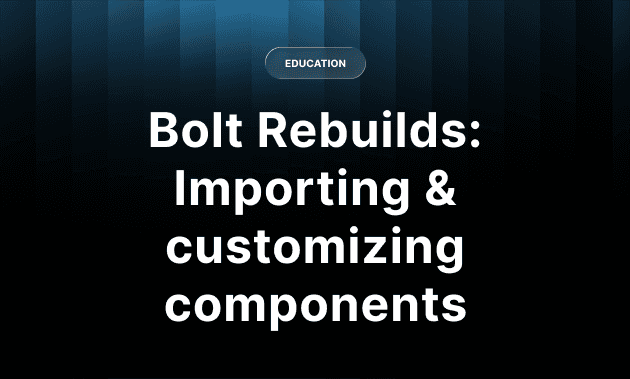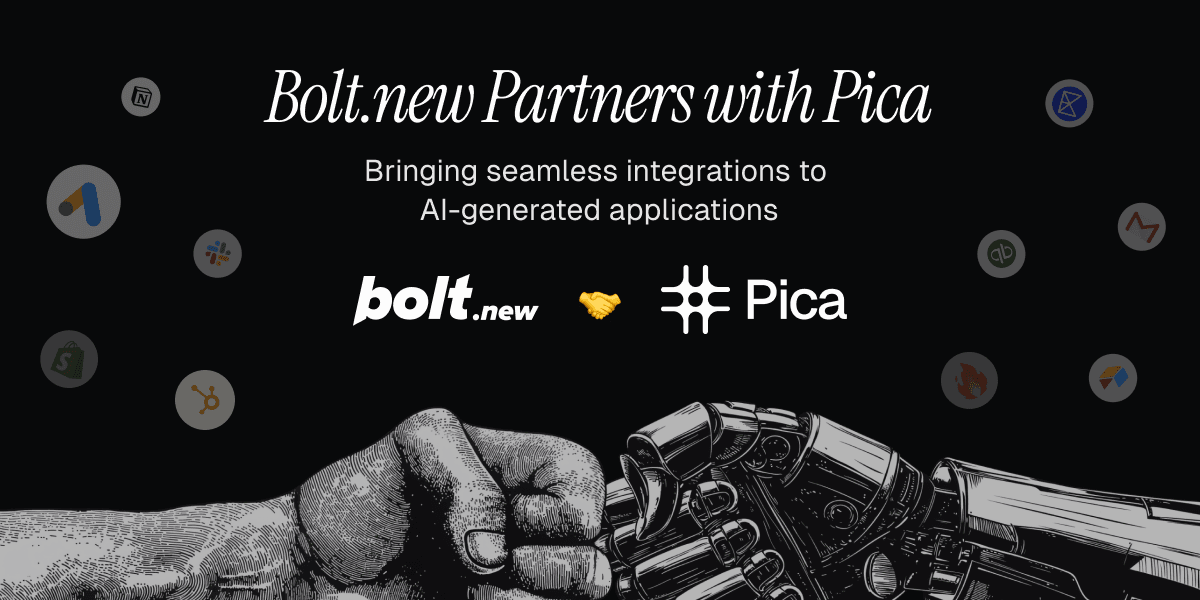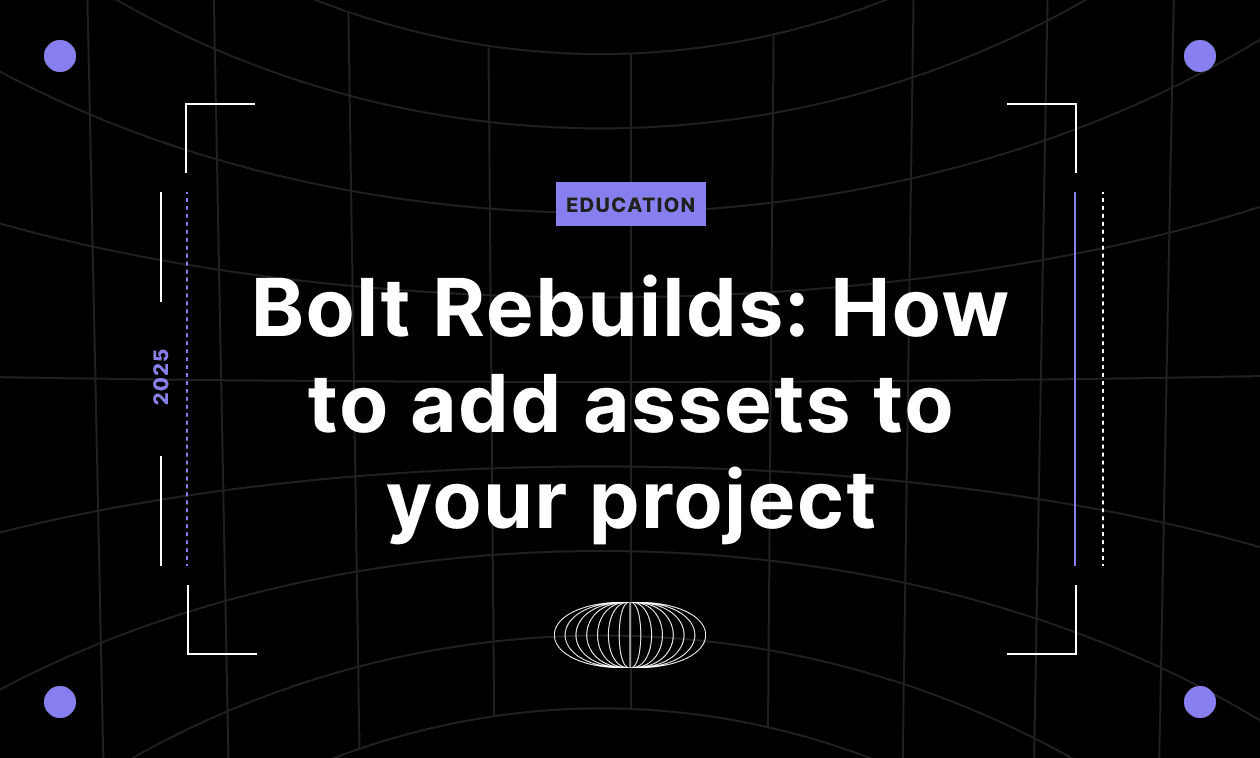
Oct 22, 2025
Inside Bolt V2 with Jakub Skrzypczak: What’s new
Jakub Skrzypczak walked us through his top tips for building with Bolt V2 on a livestream. Here are the highlights.
Insights
Jakub Skrzypczak on his top tips for building with Bolt V2.
Last week, we went live with designer, builder, and Bolt power-user Jakub Skrzypczak to take a first look at everything new in Bolt V2.
If you’ve spent any time on our Discord or X feeds, you’ve probably seen Jakub’s work. He frequently takes a single prompt and turns it into a fully functional app in minutes.
During this session, Jakub walked through how he uses Bolt V2’s new Claude agent, Plan Mode, and the completely reimagined backend and UI to build smarter, faster, and with less friction than ever before.
Bolt Chief of Staff Alex Berger also broke down how Bolt V2 redefines what “AI-native development” means, from new backend primitives like edge functions and authentication to the all-in-one Bolt Cloud that powers them.
Together, they built an app live on stream, answered community questions, and gave a first-hand look at how V2 helps you go from idea to deployed product without touching external services or writing complex configs.
If you missed the livestream or just want to revisit the highlights, we’re recapping the key moments and takeaways here so you can explore Bolt V2’s most powerful new features at your own pace.
But first: What’s Bolt V2?
Bolt V2 is the next generation of AI-native full-stack development, designed to make building production-ready websites and apps simpler, faster, and fully-integrated.
Bolt V2 combines the power of frontier AI coding agents (like Claude and GPT-based models) with a complete, built-in backend infrastructure that handles:
Authentication
Databases
File storage
Edge functions (secure backend logic)
Hosting and domains
Analytics
Everything runs inside Bolt Cloud. So no more juggling between Supabase, Netlify, or Posthog tabs. Instead, you can build fully-functional applications without ever leaving the editor.
How to add the Bolt V2 Claude agent & put Bolt in plan mode
Jakub first demonstrated how to start a new project with the Claude agent by using the new agent selector dropdown in Bolt.
Then, instead of jumping straight into “Build,” he used Plan Mode. Plan Mode allows Bolt to outline the full project before writing any code.

Why it matters:
Plan Mode lets you see what Bolt understands from your prompt.
You can review every planned step and clarify what you want to build before using any tokens.
This saves you time, tokens, and debugging later.
Example workflow:
Choose the Claude Code agent from the agent selector.

Select Plan Mode.

Review the generated project plan (Bolt lists every step).

Approve, then hit Implement this plan.

Jakub’s first tip: “If Claude doesn’t ask you questions about your prompt, ask it to ask you some. The better it understands, the better your app will be.”
New UI: What’s changed in Bolt V2
The V2 interface has been fully reimagined for clarity and control.

New layout includes:
Preview, Code, and Database tabs all in one place.
A persistent sidebar for Auth, Functions, Storage, Analytics, and Domains.
Visual Inspector (still here!) for editing components directly on the page.
Responsive design testing so you can preview your app on mobile, tablet, or desktop.
Quality-of-life upgrades:
Built-in GitHub integration and one-click publish.
Toggle light/dark mode dynamically.
“Sound on build complete” (which you can now turn off in Project Settings → General → Notifications).
Project settings: The control center
Your app’s control panel lives inside Project Settings. No external dashboards needed.

Key tabs
Domains & Hosting: Choose Bolt Cloud or Netlify. You can even buy a domain directly in Bolt.
Analytics: Track visitors, sources, and top locations—no third-party integrations required.
Authentication: Configure sign-in options and password protection.
File Storage: Store media and generated content securely.
Secrets: Manage API keys safely.
Version History: Roll back to any previous version or preview older builds without restoring them.

Edge functions explained
Edge functions (or server functions) handle secure, backend operations in your app, like connecting to APIs or managing secrets.
In the livestream, Jakub built a virtual try-on app using Google’s Gemini API for image generation. The API key was stored as a secret in Bolt’s backend and accessed through an edge function.
Jakub’s definition of edge functions: “Edge functions are little robot helpers that do special jobs for your app behind the scenes.”
Alex’s definition: “Think of it as a secure tunnel between your app and whatever third-party service you’re connecting to, hidden from users and the public.”
From errors to iteration
As with any good live demo, Jakub ran into a couple hiccups while he was building his app on the stream. At one point, the model initially picked the wrong API, leading to a failed generation.
Instead of starting over, Jakub copied the error, pasted it into chat, and let Bolt V2 fix itself.
“There are no more error loops,” he said. “When something breaks, Bolt just helps you fix it and moves on.”
A few minutes later, the virtual try-on app was live.
Authentication & security features

Bolt V2 introduces native authentication inside the Bolt Cloud backend, so you don’t need to use Supabase or Auth0.
Why it matters:
Email + password authentication out of the box
Email verification to prevent fake signups
Leaked password detection for user safety
User management dashboard to see who’s signed up
Bonus feature: Security audit
Bolt automatically flags potential security issues (like missing password checks or unprotected routes) and lets you fix them with a single click.
“You can now run a complete security audit directly in Bolt. No devOps degree required,” said Jakub.
What to know about the backend
Here’s what’s new with Bolt’s backend.
Supabase, hosting and domains

Supabase integration: Optional. Bolt V2 now includes its own database layer, but you can still “claim” your database to Supabase if you want external hosting.
Netlify: Still supported. Switch between Bolt Cloud and Netlify with one click.
Domains: Buy, connect, or manage custom domains directly inside Bolt.
Version History

Instantly preview older versions before restoring them.
Currently rolls back frontend code (database rollback coming soon).
Analytics

See live user data, traffic sources, and regions directly in Bolt.
No setup. Automatically integrated with every deployed app.
Backups

Full versioned backups stored in Bolt Cloud.
One-click restore available in Project Settings → Version History.
Prompting Tips from Jakub
Here’s how to get from idea to app faster from someone who builds with Bolt every day.
Start with Plan Mode: Get the architecture right before diving into build.
Be specific.
Do: Prompt with “three-column layout, light mode, larger preview images”.
Don’t: Prompt with “Minimal design.” Bolt guesses, and you might not love the guess
Clear your context window often.
After finishing one section, clear the context to save tokens and keep Bolt focused.
Ask for documentation.
Example: “Create a
README.mdsummarizing my app and file responsibilities.” This helps Bolt reorient faster when you return later.
Troubleshoot by copying errors into the chat.
Bolt can fix most build-time errors automatically.
“The more precise your prompt, the closer you get to 100 identical results,” said Jakub. “It’s just like asking 100 people to draw tic-tac-toe with specific instructions.”
Got questions? We probably answered them.
Here are a few of the viewer questions Alex and Jakub answered from the chat.
Q: Do I own the code I generate in Bolt?
Yes. 100%. You can export or push to GitHub anytime. Bolt claims no rights to your code.
Q: How do I reduce token usage?
Use Plan Mode, clear context frequently, and avoid vague follow-up prompts. Learn more about maximizing token usage here.
Q: Can I use my own APIs (like Gemini or OpenAI)?
Absolutely. Store your API keys as Secrets and use Edge Functions to call them securely.
Q: What if I prefer Supabase or Firebase?
You can still connect external databases. Bolt just makes that optional now.
Q: How does pricing work?
Same as before. More info on pricing here.
Final thoughts: What Bolt means for builders
Bolt V2 closes the gap between idea and execution. You no longer need to piece together infrastructure, worry about backend setup, or write config files just to get started.
Instead, you can:
Build full-stack apps in hours rather than weeks.
Securely integrate AI APIs without leaking secrets.
Ship to production instantly with one login and one plan.
“Bolt V2 makes solo founders look like full teams, and small teams ship like enterprises,” said Alex.
To catch the next livestream, join our Discord. And if you haven’t already, now is the time to start building with bolt.new.










